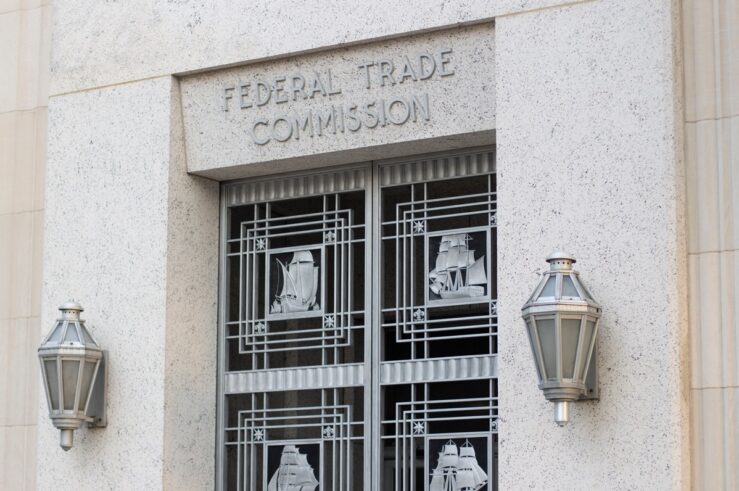It is a bedrock principle underlying the First Amendment that the government may not penalize private speech merely because it disapproves of the message it conveys.
The Federal Circuit handed down a victory for free expression today — in the commercial context no less. At issue was the Lanham Act’s § 2(a) prohibition of trademark registrations that
[c]onsist[] of or comprise[] immoral, deceptive, or scandalous matter; or matter which may disparage or falsely suggest a connection with persons, living or dead, institutions, beliefs, or national symbols, or bring them into contempt, or disrepute.
The court, sitting en banc, held that the “disparaging” provision is an unconstitutional violation of free expression, and that trademarks will indeed be protected by the First Amendment. Although it declined to decide whether the other prohibitions actually violated the First Amendment, the opinion contained a very strong suggestion to future panels that this opinion likely applies in that context as well.
In many respects the opinion was not all that surprising (particularly if you’ve read my thoughts on the subject here and here ). However given that it was a predecessor Court of Customs and Patent Appeals decision, In Re McGinley, that once held that First Amendment concerns were not implicated at all by § 2(a) because “it is clear that the … refusal to register appellant’s mark does not affect his right to use it” — totally ignoring of course the chilling effects on speech — it was by no means certain that this decision would come out correctly decided.
Today’s holding vacated a decision from a three-judge panel that, earlier this year, upheld the ill-fated “disparaging” prohibition. From just a cursory reading of § 2(a), it should be a no-brainer that it clearly implicates the content of speech — if not a particular view point — and should get at least some First Amendment scrutiny. However, the earlier three-judge opinion gave all of three paragraphs to this consideration — one of which was just a quotation from McGinley. There, the three-judge panel rather tersely concluded that the First Amendment argument was “foreclosed by our precedent.”
Thus it was with pleasure that I read the Federal Circuit as it today acknowledged that “[m]ore than thirty years have passed since the decision in McGinley, and in that time both the McGinley decision and our reliance on it have been widely criticized[.]” The core of the First Amendment analysis is fairly straightforward: barring “disparaging” marks from registration is neither content neutral nor viewpoint neutral, and is therefore subject to strict scrutiny (which it fails). The court notes that McGinley’s First Amendment analysis was “cursory” (to put it mildly), and was decided before a fully developed body of commercial speech doctrine had emerged. Overall, the opinion is a good example of subtle, probing First Amendment analysis, wherein the court really grasps that merely labeling speech as “commercial” does not somehow magically strip away any protected expressive content.
In fact, perhaps the most important and interesting material has to do with this commercial speech analysis. The court acknowledges that the government’s policy against “disparaging” marks is targeting the expressive aspects of trademarks and not the more easily regulable “transactional” aspects (such as product information, pricing, etc.)— to look at § 2(a) otherwise would not make sense as the government is rather explicitly trying to stop certain messages because of their noncommercial aspects. And the court importantly acknowledges the Supreme Court’s admonition that “[a] consumer’s concern for the free flow of commercial speech often may be far keener than his concern for urgent political dialogue” ( although I might go so far as to hazard a guess that commercial speech is more important that political speech, most of the time, to most people, but perhaps I am just cynical).
The upshot of the Federal Circuit’s new view of trademarks and “commercial speech” reinforces the notion that regulations and laws that are directed toward “commercial speech” need to be very narrowly focused on the actual “commercial” message — pricing, source, etc. — and cannot veer into controlling the “expressive” aspects without justification under strict scrutiny. Although there is nothing terrible new or shocking here, the opinion ties together a variety of the commercial speech doctrines, gives much needed clarity to trademark registration, and reaffirms a sensible view of commercial speech law.
And, although I may be reading too deeply based on my preferences, I think the opinion is quietly staking out a useful position for commercial speech cases going forward—at least to a speech maximalist like myself. In particular, it explicitly relies upon the “unconstitutional conditions” doctrine for the proposition that the benefits of government programs cannot be granted upon a condition that a party only engage in “good” or “approved” commercial speech. As the world becomes increasingly interested in hate speech regulation, and our college campuses more interested in preparing a generation of”safe spacers” than of critically thinking adults, this will undoubtedly become an important arrow in a speech defender’s quiver.




